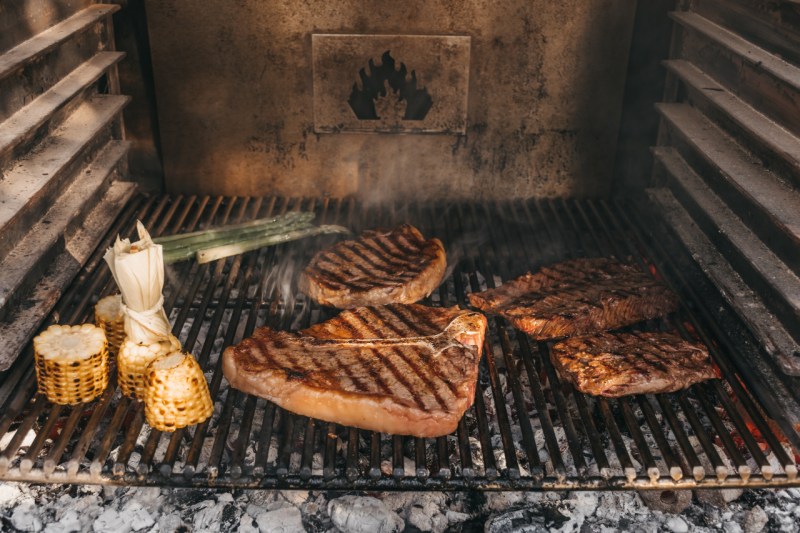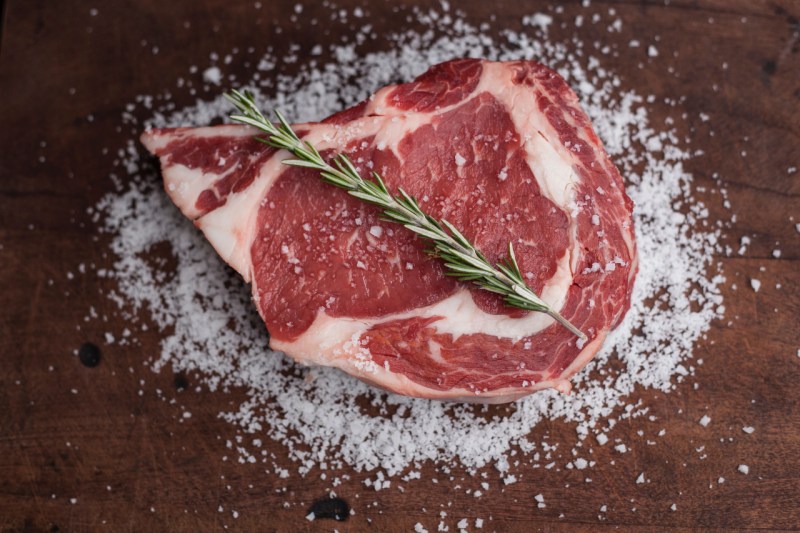
Steak, whether grilled or seared hard in a cast-iron pan, is a delicious and meaty indulgence perfect for any weather. While both of these methods are fantastic, slow-smoking is another great cooking method for steaks. Although smoking meat is usually reserved for cuts like brisket or ribs, steaks can also be smoked. All you need is the proper techniques and equipment.
For advice on how to smoke steaks, The Manual has enlisted Chef Danny Lledo of Michelin-Starred Restaurant Xiquet (chee-KETT) in Washington DC. Xiquet focuses on product-focused Mediterranean dishes, all centered around a wood-fire kitchen. At Xiquet, Chef Lledo creates innovative dishes highlighting the finest local and international products.
Chef Danny Lledo on Choosing the Steak

For the best-smoked steaks, choose cuts on the thicker end (around 1.5 inches). At a typical butcher counter, these options include ribeye, tenderloin, or New York strip steaks. If the steak is too thin, such as skirt steak, it’ll reach doneness without retaining the flavor of the smoke. Ribeye is a good choice because it’s well-marbled and is usually butchered thick.
Another popular choice is a porterhouse steak. Due to the porterhouse’s large bone, cooking time will be long. A trick to smoking a porterhouse is placing the meat vertically with the strip side on the grates (the filet part away from the heat). This technique will ensure the leaner filet portion of the porterhouse does not overcook compared to the strip. You can also try cheaper cuts like London Broil (butchered from the rear leg of the cow). This lean cut is tasty marinated, smoked, and sliced thin.
When selecting your steaks, it’s critical to know the weight and size of the cut. This information will allow you to properly measure the cooking time, avoiding the chances of your steaks becoming overcooked or dry. Remember, the flavor isn’t the only benefit of smoking.
“Yes you can smoke meats for flavor,” said Lledo. “But it is also very useful for tenderness, especially when you are working with meats that are especially dense or more difficult to cook, smoking breaks down the fibers slowly over low heat. It might not be necessary for a ribeye or other steaks, but it enhances the flavor with the wood smoke and gradual cooking.”
Smoking the Steak
You don’t need fancy smoking equipment to make a good smoked steak — a standard Weber charcoal grill is perfectly fine. Before you start your smoking process, you need a good grasp of the fundamentals.
“I have a green egg smoker and putting wood in it isn’t enough,” said Lledo. “You need to make sure the wood chips are wet to create the smoke. First, get your smoker to the desired heat and place the wet wood chips in it. They must be soaked for a couple of hours. You can cook a complete steak, you can cook a two-pound ribeye, with indirect heat, but it is going to take you over an hour and a half if you want to get the wood flavor profile.”
The key is managing the temperature and making sure your wood chips are generating the proper amount of smoke. The magic combination is low heat and a long cooking time. This will infuse smoky flavor into your steak without overcooking it. You can also customize the smoke flavor by the type of wood you choose. For a milder flavor, select pecan, maple, or alder. For something more pronounced, try mesquite, hickory, or oak. If you prefer your steaks with a bit of char, grill the finished smoked steaks quickly over hot charcoal. This method of low to high temperature (the same philosophy as the sous vide reverse sear) will give your steak those patented grill marks without drying out the meat.



